Recent Posts
Foundation Cracks and Water Infiltration: Causes and Fixes
6/12/2024 (Permalink)
 We will explore the common causes of foundation cracks and provide helpful fixes to address water infiltration issues.
We will explore the common causes of foundation cracks and provide helpful fixes to address water infiltration issues.
The foundation of your home is not only vital for its structural integrity but also for protecting it from water infiltration. However, foundation cracks can compromise this protective barrier, allowing water to seep in and cause significant damage. Understanding the causes and finding effective solutions for foundation cracks and water infiltration is crucial to preserving the health of your home. Here, we will explore the common causes of foundation cracks and provide helpful fixes to address water infiltration issues.
Causes of Foundation Cracks
- Soil Settlement: Over time, the soil beneath your foundation can settle, leading to uneven pressure and causing cracks to develop.
- Poor Drainage: Improper or inadequate drainage around your home can result in water pooling around the foundation. This constant exposure to moisture can weaken the foundation and lead to cracks.
- Hydrostatic Pressure: Excessive water pressure from saturated soil can push against the foundation walls, causing them to crack under the strain.
- Temperature Changes: Extreme temperature fluctuations can cause the foundation to expand and contract, leading to cracks.
Fixes for Foundation Cracks and Water Infiltration
- Evaluate Drainage System: Ensure that your home's drainage system is properly designed and functioning effectively. Clear gutters and downspouts regularly to prevent water overflow. Consider grading the soil around your foundation to direct water away from the house.
- Install a Sump Pump: A sump pump can be an effective solution to manage water intrusion. It collects excess water and pumps it away from the foundation, minimizing the risk of water infiltration through cracks.
- Seal Foundation Cracks: Smaller cracks can be sealed using epoxy or polyurethane-based sealants. These sealants fill the cracks and prevent water from entering your home. However, it's essential to note that this is a temporary fix and may not be suitable for larger or more severe cracks.
- Professional Foundation Repair: For significant or recurring foundation cracks, it's advisable to consult with a professional foundation repair service like SERVPRO®. They can assess the extent of the damage, determine the underlying cause, and recommend appropriate solutions. Professional repairs may involve techniques such as concrete underpinning, carbon fiber reinforcement, or helical piers to stabilize the foundation and prevent further cracking.
- Maintain Consistent Moisture Levels: Keep the soil around your foundation consistently moist to reduce the risk of shrinking and expanding, which can cause foundation cracks. Avoid overwatering or allowing the soil to dry out completely.
- Monitor and Address Minor Cracks: Regularly inspect your foundation for any signs of cracking or water infiltration. Promptly address minor cracks by sealing them to prevent further water damage and potential structural issues.
- Landscaping Considerations: Plant trees and shrubs away from the foundation, as their root systems can grow and exert pressure on the foundation walls, leading to cracks. Additionally, avoid overwatering landscaping near the foundation.
Foundation cracks and water infiltration can be a serious concern for homeowners. By understanding the causes and implementing effective fixes, you can protect your home from water damage and preserve its structural integrity. Remember to evaluate drainage systems, seal cracks, and consult with professionals for more extensive repairs. By taking proactive steps and working with trusted experts like SERVPRO, you can ensure the long-term health of your foundation and overall home. Act promptly, address issues as they arise, and safeguard your home against potential water infiltration and its damaging effects.
Emergency Response Planning for Florida Storms: Creating a Checklist
5/15/2024 (Permalink)
 In this blog, we will explore key steps and considerations for emergency response planning specific to Florida storms.
In this blog, we will explore key steps and considerations for emergency response planning specific to Florida storms.
Living in Florida, it is important to be well-prepared for the potential impact of severe storms and hurricanes. By creating an emergency response plan and checklist, you can ensure the safety of yourself, your family, and your property. In this blog, we will explore key steps and considerations for emergency response planning specific to Florida storms.
Stay Informed
The first step in emergency response planning is to stay informed about potential storms and weather conditions. Sign up for local weather alerts and notifications to receive timely information about approaching storms. Stay informed about evacuation orders, road closures, and emergency shelters in your area.
Create a Communication Plan
Establish a communication plan with your family or household members. Designate a central contact person who will be responsible for gathering and disseminating information. Share emergency contact numbers and establish meeting points in case you are separated during the storm. Consider using phone apps or group messaging apps to stay connected.
Prepare an Emergency Kit
Assemble an emergency kit that includes essential items for you and your family. Include items such as non-perishable food, drinking water, flashlights, batteries, a first aid kit, medications, important documents, cash, and personal hygiene items. Keep the kit in a readily accessible location and ensure that it is regularly updated.
Evacuation Planning
If your area is under an evacuation order, plan your evacuation route in advance. Identify multiple routes to your designated evacuation site, considering alternative routes in case of road closures or congestion. Pack necessary items such as clothing, important documents, and supplies you might need during your evacuation.
Secure Your Property
Protecting your property should be a priority in your emergency response plan. Secure loose outdoor items, such as patio furniture or garden tools, that could become projectiles in high winds. Consider installing hurricane shutters or boarding up windows and doors to protect against flying debris. Trim tree branches that pose a threat to your property or power lines.
Review Insurance Coverage
Review your insurance coverage to ensure you have adequate protection for storm-related damages. Consider adding coverage for flood or wind damages if necessary. Familiarize yourself with the claims process and understand what documentation will be required to file a claim.
Backup Important Data
Create a backup of important data and documents, such as insurance policies, identification cards, and financial records. Store them in a secure location, including cloud storage or a portable hard drive, to ensure you can access them even if your primary copies are damaged or inaccessible.
Stay Connected to SERVPRO®
Establish a connection with a professional storm damage restoration company like SERVPRO. Prior to the storm, save the contact information of your local SERVPRO office. They can provide essential services such as water damage restoration, mold remediation, and structural repairs after a storm. Having a trusted restoration partner in your emergency response plan can help streamline the recovery process.
By following these steps and creating an emergency response checklist, you can be well-prepared for Florida storms. Remember to review and update your plan regularly to ensure its effectiveness. Stay vigilant, stay informed, and seek professional assistance when necessary. Together, we can navigate Florida storms with preparedness and resilience.
The Different Types of Mold Commonly Found in Homes
5/13/2024 (Permalink)
 By understanding the different types of mold that can be found in homes, homeowners can take appropriate measures to prevent mold growth.
By understanding the different types of mold that can be found in homes, homeowners can take appropriate measures to prevent mold growth.
Mold is a common issue in many homes, and different types of mold can thrive in various environments. Identifying the specific type of mold in your home is essential for effective remediation. Here's a closer look at some common types of mold:
Cladosporium
Cladosporium is a widespread type of mold that can appear as dark green or black spots on surfaces. It often grows on organic materials like wood, textiles, and plant debris. Cladosporium mold can thrive in both indoor and outdoor environments, particularly in areas with high humidity levels. While it's not typically considered harmful, large concentrations of Cladosporium mold can cause staining and structural damage to building materials.
Aspergillus
Aspergillus is a genus of mold that includes numerous species commonly found indoors and outdoors. It can appear in various colors, including green, yellow, and brown. Aspergillus mold typically grows on organic materials like soil, compost, and decaying vegetation. While most species of Aspergillus are harmless, some can produce allergens and irritants.
Stachybotrys
Stachybotrys, often referred to as black mold due to its dark appearance, is a fungus that flourishes in areas with high moisture levels and water damage. Its characteristic slimy black spots can frequently be observed on surfaces such as drywall, ceiling tiles, and wood.
Penicillium
Penicillium is a genus of mold that includes over 200 different species, some of which are commonly found indoors. It can appear as blue or green fuzzy spots on surfaces and often grows on materials like wallpaper, carpeting, and upholstered furniture. While Penicillium mold is known for its role in producing antibiotics and cheese, certain species can produce mycotoxins.
Alternaria
Alternaria is a type of mold commonly found in indoor and outdoor environments. It appears as dark green or black spots on surfaces and is often associated with water damage and damp conditions. Alternaria mold can grow on a variety of materials, including walls, ceilings, and window sills.
By understanding the different types of mold that can be found in homes, homeowners can take appropriate measures to prevent mold growth and address any existing issues effectively. Regular inspection and maintenance of your home's interior and exterior can help reduce the risk of mold infestations and maintain a healthy indoor environment. If you suspect mold growth in your home, consider consulting a professional mold remediation specialist, such as SERVPRO of Punta Gorda, for assistance.
Restoring Fire-Damaged Chimneys and Fireplaces
4/17/2024 (Permalink)
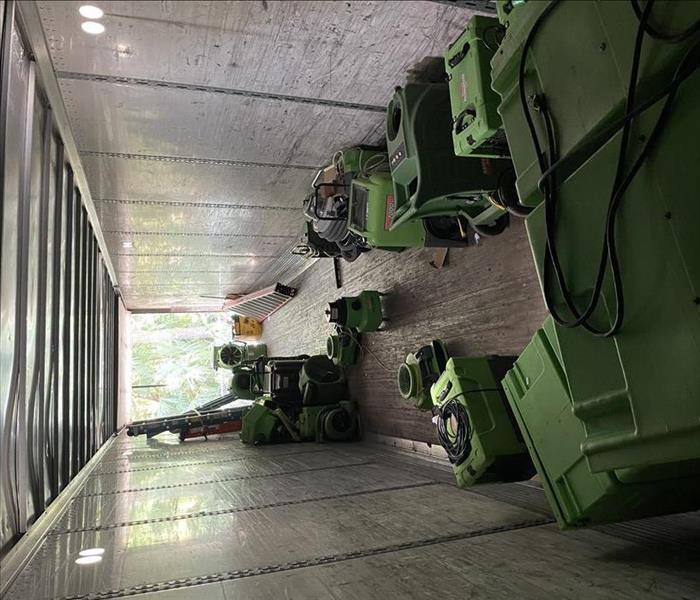 In this blog, we will discuss the importance of restoring fire-damaged chimneys and fireplaces.
In this blog, we will discuss the importance of restoring fire-damaged chimneys and fireplaces.
Chimneys and fireplaces are essential components of many homes, providing warmth, ambiance, and comfort. However, when a fire occurs, these features can sustain extensive damage, both visible and hidden, which can lead to significant structural problems if not addressed. In this blog, we will discuss the importance of restoring fire-damaged chimneys and fireplaces, and the steps necessary to ensure safe and efficient restoration with the help of professional fire damage restoration and remediation services, such as SERVPRO®.
Conduct a Thorough Inspection
After a fire, it is essential to have a licensed professional inspect your chimney and fireplace for damage. Professional technicians will assess both the visible and hidden damage, such as the condition of the masonry, flue liner, and internal components of the chimney. A thorough inspection allows a restoration plan to be developed, ensuring that all necessary repairs are identified and completed.
Remove Debris and Soot
Fire damage restoration and remediation services will start the restoration process by removing debris and soot from the chimney and fireplace. This process includes cleaning the visible surfaces, such as the flue liner and chimney cap, as well as the internal components of the chimney. Advanced cleaning technologies and techniques, including dry ice blasting and chemical sponges, are utilized to ensure all debris and soot are removed safely and efficiently.
Address Structural Damage
Structural damage to the chimney and fireplace caused by a fire can be significant. Loose bricks, cracks in the masonry, and other damage can pose a severe safety risk if not addressed. Fire damage restoration and remediation services ensure that all structural damage is identified and repaired promptly to maintain the safety and structural integrity of the chimney and fireplace.
Repair Internal Components
The internal components of a chimney, including the flue liner and damper, can be damaged severely by a fire. If left unaddressed, the structural integrity of the chimney can be compromised, and gases, including carbon monoxide, can enter the home. Professional fire damage restoration and remediation services will identify and repair any damaged components, ensuring the safe operation of the chimney and fireplace.
Rebuild and Reinstall
In severe cases of chimney and fireplace damage, rebuilding and reinstalling may be necessary. Professional restoration technicians will work with you to determine the best course of action to restore your chimney and fireplace to its pre-fire condition. Restoration and rebuilding efforts will include the construction of a new flue liner, the installation of new components, and the rebuilding of the chimney's masonry.
Fire Prevention Measures
To prevent future fires, professional restoration services will make recommendations on fire prevention measures, such as cleaning the chimney regularly, inspecting the fireplace before use, and using appropriate firewood. Implementing these recommendations will help maintain the safety and longevity of your chimney and fireplace.
Chimneys and fireplaces are not only aesthetically pleasing but also essential components of homes. Restoring fire-damaged chimneys and fireplaces is crucial to maintaining their safety, longevity, and aesthetic appeal. Professional restoration and remediation services provided by SERVPRO will ensure the safe and efficient restoration of your chimney and fireplace following a fire. The necessary steps, including a thorough inspection, removing debris and soot, addressing structural and internal damage, rebuilding and reinstalling, and implementing fire prevention measures, ensure the success of the restoration process. Contact a professional fire damage restoration and remediation service promptly to restore your fire-damaged chimney and fireplace to its pre-fire condition.
How to Properly Ventilate Your Home to Prevent Mold
3/13/2024 (Permalink)
Welcome to SERVPRO®, where we are committed to providing valuable insights to help you maintain a safe and healthy living environment. In this post, we'll be discussing a crucial aspect of home maintenance – proper ventilation to prevent mold growth. Mold can be a persistent problem in homes, especially in areas with high humidity levels. However, with the right ventilation strategies, you can create an environment that discourages mold growth and keeps your home fresh and clean.
Understanding the Importance of Ventilation
Effective ventilation is key to maintaining optimal indoor air quality. Poor ventilation can lead to a buildup of moisture, providing the perfect breeding ground for mold. By allowing fresh air to circulate throughout your home, you can reduce humidity levels and inhibit mold growth. Now that we know its importance, let's look at some practical tips to help you properly ventilate your home.
Use Exhaust Fans
Install and regularly use exhaust fans in high-moisture areas such as bathrooms, kitchens, and laundry rooms. These fans help remove excess humidity generated by activities like cooking and showering, preventing moisture from accumulating.
Open Windows and Doors
Whenever weather permits, open windows and doors to allow cross-ventilation. This helps create a continuous flow of fresh air throughout your home, reducing indoor humidity levels and minimizing the risk of mold growth.
Check and Clean HVAC Systems
Regularly inspect and clean your heating, ventilation, and air conditioning (HVAC) systems. Dirty or clogged filters can impede airflow and trap moisture, creating an environment conducive to mold. Change filters as recommended by the manufacturer to ensure optimal performance.
Invest in a Dehumidifier
Consider using a dehumidifier in areas prone to high humidity, such as basements or crawl spaces. Dehumidifiers can effectively remove excess moisture from the air, making it more challenging for mold to thrive.
Sal Leaks and Gaps
Inspect your home for any leaks or gaps that could allow moisture to enter. Seal these areas promptly to prevent water intrusion and maintain a dry indoor environment.
Proper ventilation is a key factor in preventing mold growth in your home. By following these practical tips, you can create an environment that discourages mold, promotes healthy indoor air quality, and ensures the longevity of your property. If you encounter mold issues despite your best efforts, don't hesitate to contact SERVPRO for professional mold remediation services. Remember, a well-ventilated home is a happy home!
4 Reasons Why Immediate Action After Water Damage is Important
2/22/2024 (Permalink)
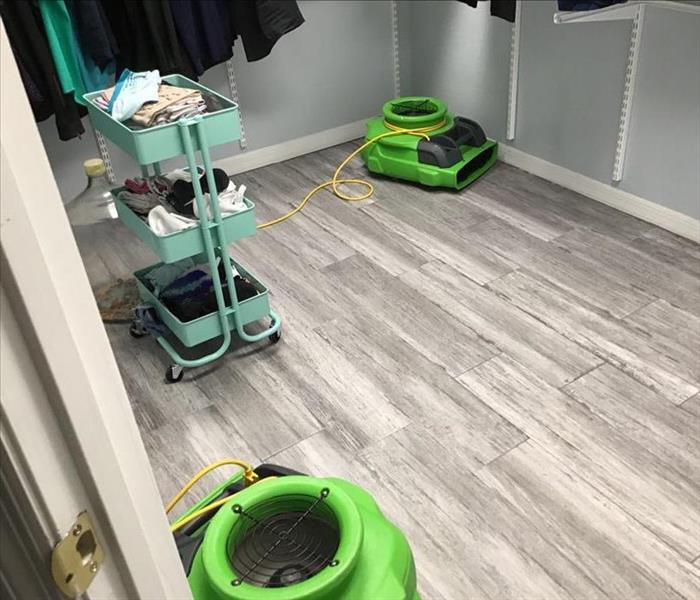 At SERVPRO of Punta Gorda, our team is equipped with the expertise and resources to respond immediately to water damage emergencies.
At SERVPRO of Punta Gorda, our team is equipped with the expertise and resources to respond immediately to water damage emergencies.
Water damage can strike unexpectedly, wreaking havoc in your home or business. In many cases, water damage can stay hidden for an extended period of time. Acting quickly is crucial in mitigating the effects of water damage and preventing further damage. Here are four reasons why time is of the essence after water damage occurs.
1. Preventing Mold Growth
Within as little as 24 to 48 hours after water intrusion, mold can start to develop in damp environments. As moisture migrates throughout your property, so does mold infestation. Mold growth not only compromises indoor air quality but can also cause significant damage to your property.
2. Limiting Structural Damage
Water can seep into walls, flooring, and other structural elements, weakening their integrity over time. Prompt extraction, drying, and restoration help prevent long-term structural damage. Delayed action can lead to expensive repairs or even structural failure in severe cases.
3. Preserving Belongings and Valuables
Furniture, electronics, documents, and sentimental items are very susceptible to irreparable damage when exposed to water. Quick intervention and professional restoration services increase the likelihood of salvaging these items, and preserving your valuables.
4. Lower Restoration Costs
Time-sensitive water damage mitigation is cost-effective. Immediate action reduces the extent of damage, thereby minimizing restoration costs. Delaying response may escalate the damage, resulting in higher expenses for remediation and repairs.
Don't hesitate when water damage strikes. At SERVPRO of Punta Gorda, our team is equipped with the expertise and resources to respond immediately to water damage emergencies. Our rapid response mitigates further damage, ultimately saving you time, money, and stress.
Remember, time is truly of the essence after water damage occurs. Trust our SERVPRO® team to be your partner in restoring your property to its pre-damage condition. Act quickly, restore promptly – SERVPRO® is here to help.
Tips for a Smooth Hurricane Insurance Claims Process
1/8/2024 (Permalink)
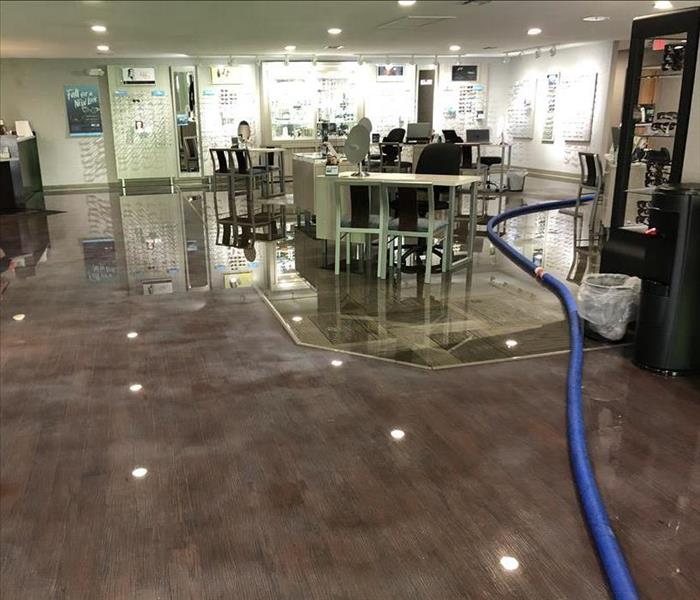 When a hurricane strikes, the aftermath can be overwhelming and stressful.
When a hurricane strikes, the aftermath can be overwhelming and stressful.
When a hurricane strikes, the aftermath can be overwhelming and stressful. Among the challenges you may face, dealing with insurance claims is certainly a crucial one. With our decades-long experience in disaster recovery, SERVPRO® of Punta Gorda is here to provide you with easy-to-follow tips that can facilitate a smooth hurricane insurance claim process.
Understanding Your Policy
The first step towards a successful insurance claim after a hurricane is to understand the intricacies of your insurance policy. This includes being aware of the deductible, limits, and specific conditions related to hurricane damages. If you find certain aspects confusing, don't hesitate to reach out to your insurance provider for clarification.
Document the Damage
Take photographs or videos of all the damage - both to your property and belongings - as soon as it is safe to do so. This visual evidence will play a vital role when you file your claim and can significantly speed up the process.
Keep Track of Temporary Repairs
If temporary repairs are required to prevent further damage, make sure to keep a detailed record of all associated costs. Ensure to maintain receipts of all the work done and materials purchased as they can be included in your claim.
Reach Out to Your Insurance Provider Promptly
Timelines are important when it comes to insurance claims. Notify your insurance company about the damage as soon as possible. Most providers have a 24/7 claim hotline to support you immediately after disaster strikes.
Work with a Professional Restoration Service
SERVPRO® of Punta Gorda is a leader in the disaster restoration industry, specializing in storm damage restoration and recovery. We can handle the insurance claims process for you, ensuring a smooth claim process. With the expertise of our SERVPRO® team, you can rest assured knowing your home or business is in good hands, and that we're dedicated to making this process as worry-free as possible.
Remember, hurricanes are devastating, but with the right understanding of the insurance claim process and the backing of experienced professionals like SERVPRO®, restoration and recovery can be much easier.
How Does Moisture Meters Help With Fire Damage Restoration?
12/16/2023 (Permalink)
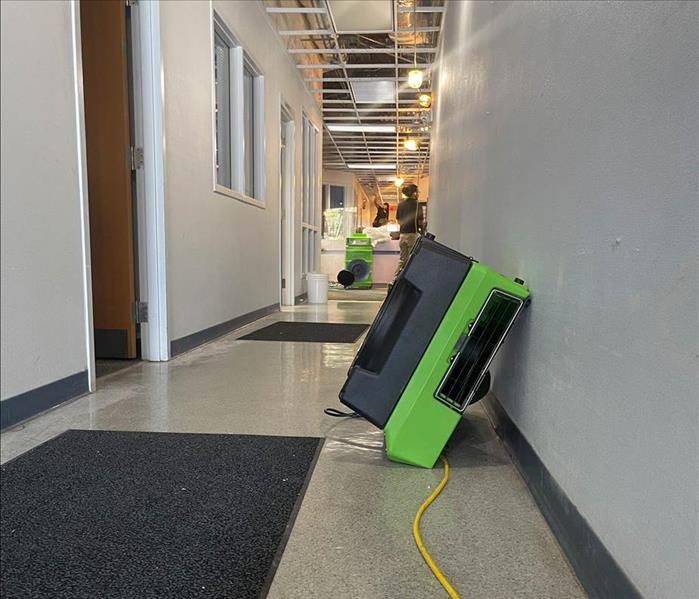 Firefighters use water to put out fires, and this can result in hidden moisture throughout your property.
Firefighters use water to put out fires, and this can result in hidden moisture throughout your property.
When we think of fire damage, water might not be the first thing that comes to mind. However, water damage often goes hand in hand with fire damage due to the efforts to extinguish the flames. Managing moisture is crucial in the aftermath of a fire to prevent further issues like mold growth and structural damage. In this blog, we'll explore the role of moisture meters in helping with fire damage restoration and why they are essential for a thorough recovery process.
Identifying Hidden Water Damage
Firefighters use water to put out fires, and this can result in hidden moisture throughout your property. Moisture meters are invaluable in detecting areas that might be harboring moisture but aren't immediately visible. By identifying these hidden pockets of moisture, professionals can take the necessary steps to prevent mold growth and further structural damage.
Preventing Mold Growth
One of the biggest concerns after a fire is the potential for mold growth. Mold thrives in damp environments, and any residual moisture left behind can create the perfect breeding ground. Moisture meters help assess the moisture levels in materials like drywall, insulation, and wood, allowing for targeted drying efforts to prevent mold before it becomes a problem.
Guiding Drying and Dehumidification
Effective drying is crucial in the aftermath of a fire to prevent secondary damage. Moisture meters provide accurate data to guide the drying and dehumidification process. Professionals can use this information to set drying goals, monitor progress, and ensure that all affected areas are thoroughly dry before reconstruction begins.
Assessing Structural Integrity
Fire damage can compromise the structural integrity of a building. Moisture meters help assess the extent of the damage by measuring the moisture content of structural materials. By determining the moisture levels in beams, supports, and other vital components, professionals can make informed decisions about repairs and reinforcements.
Verifying the Success of Restoration
Moisture meters play a critical role in the final phase of restoration. They are used to confirm that all affected areas are properly dried and restored. This verification process ensures that your property is safe, free from hidden moisture, and ready for occupancy once again.
Moisture meters are indispensable tools in fire damage restoration. They help detect hidden moisture, prevent mold growth, guide drying efforts, assess structural integrity, and verify the success of the restoration process. For a thorough and effective fire damage recovery, it's essential to work with professionals who understand the importance of moisture management and have the expertise to use these tools effectively. If you're facing fire damage, don't hesitate to contact SERVPRO® of Punta Gorda for assistance. We're here to help you restore your property to its pre-fire condition and ensure a safe and moisture-free environment.
What's the Difference between Mold Removal and Remediation?
11/14/2023 (Permalink)
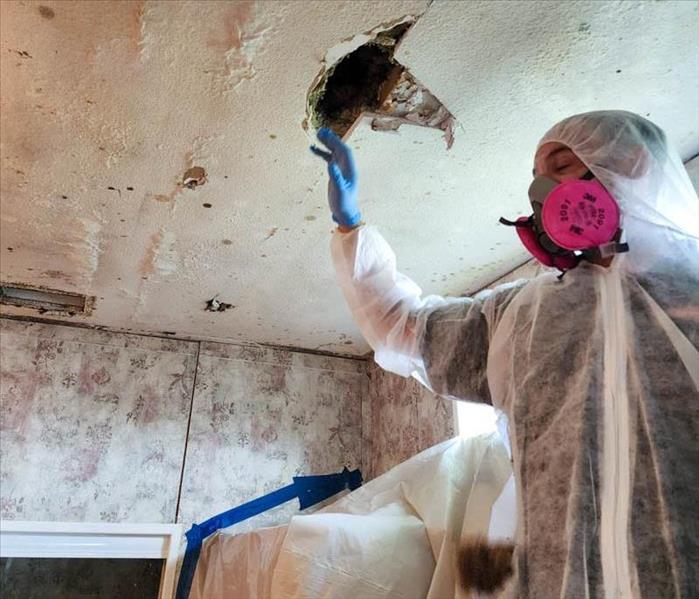 For professional mold remediation services in Punta Gorda, FL, trust the experts at SERVPRO®.
For professional mold remediation services in Punta Gorda, FL, trust the experts at SERVPRO®.
Mold issues can be a common concern for homeowners, and it can be important to know the difference between mold removal and mold remediation. In this blog, we will break down these terms, providing you with a clear understanding of each process and which one may be right for your situation.
Removal vs. Remediation: What's the Difference?
Mold Removal
Mold removal, also known as mold cleanup or mold abatement, is the process of physically removing visible mold from surfaces. It's a common misconception that mold removal alone solves the problem, but it's just one part of the equation. Mold can be a resilient organism, and removing it without addressing the root cause often leads to recurrence.
When is Mold Removal Appropriate?
Mold removal is suitable when dealing with small, isolated mold issues on non-porous surfaces like glass or tile. However, it's essential to understand that this method does not eliminate the underlying mold spores or address any moisture source, making it a temporary solution.
Mold Remediation
Mold remediation is a comprehensive approach to addressing mold issues. It involves a series of steps designed to not only remove visible mold but also address the root causes of mold growth, such as excess moisture or humidity. Mold remediation is a more thorough process and is aimed at preventing the recurrence of the mold.
When is Mold Remediation Appropriate?
Mold remediation is the preferred method when dealing with extensive mold infestations, mold on porous surfaces, or situations where the moisture source is not apparent. It encompasses mold removal, moisture control, and preventive measures to ensure a long-term solution.
The Key Steps in Mold Remediation
A professional mold remediation team, like SERVPRO® of Punta Gorda, will conduct a thorough assessment to identify the extent of the mold problem and the underlying moisture issues. Then, containment measures are put in place to prevent the spread of mold spores to other areas of your home during the remediation process.
Visible mold is carefully removed from affected surfaces using industry-approved techniques and equipment and remaining moisture issues are addressed by drying affected areas and controlling indoor humidity levels. Lastly, preventive measures such as sealing surfaces and improving ventilation are taken to reduce the risk of future mold growth.
While mold removal can address visible mold, it doesn't tackle the underlying causes or prevent mold from returning. Mold remediation, on the other hand, offers a comprehensive solution to eliminate mold, and its causes, and prevent future growth. For professional mold remediation services in Punta Gorda, FL, trust the experts at SERVPRO®. We have the knowledge, experience, and equipment to handle mold issues effectively.
What You Need to Know About Flood Plains and Water Damage in Punta Gorda
10/9/2023 (Permalink)
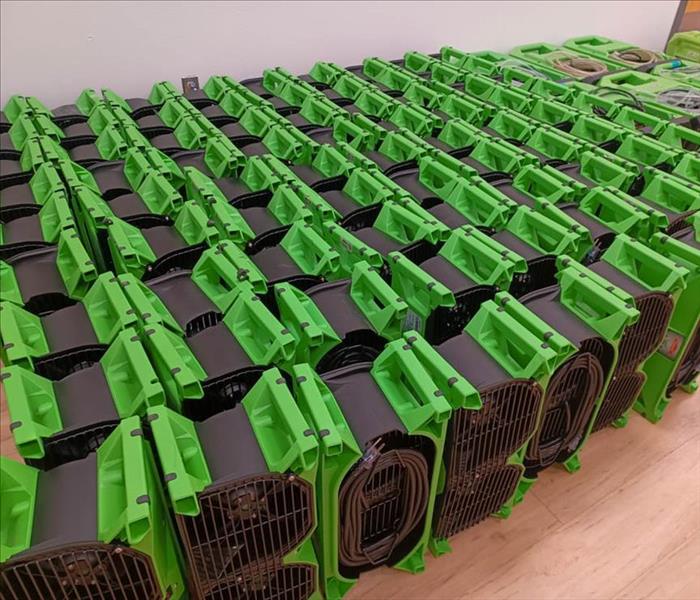 It's essential to be prepared for the potential risks associated with flood plains and water damage.
It's essential to be prepared for the potential risks associated with flood plains and water damage.
Nestled along Florida's beautiful Gulf Coast, Punta Gorda offers residents and visitors a picturesque paradise. However, living in a coastal area comes with its unique challenges, including the risk of flooding. In this blog, we'll explore flood plains and water damage in Punta Gorda, providing valuable insights to help you understand your area better and take proactive steps to safeguard your property.
Flood Plain Basics
Punta Gorda, like many coastal regions, has designated flood plains. These are areas prone to flooding during heavy rains, storms, and hurricanes. Understanding whether your property is in a flood plain is the first step in assessing your flood risk
Flood Risk Assessment
Knowing your flood risk is crucial. The Federal Emergency Management Agency (FEMA) provides Flood Insurance Rate Maps (FIRMs) that outline flood zones and risk levels. Consult these maps to assess your property's risk and consider purchasing flood insurance.
Flood Insurance
Standard homeowners' insurance policies typically do not cover flood damage. If you're in a flood-prone area, securing flood insurance is essential. It provides financial protection and peace of mind in the event of water damage from flooding.
Flood Preparedness
Prepare for potential flooding by creating an emergency kit, having a family emergency plan, and elevating valuable items. Being proactive can minimize damage and ensure the safety of your loved ones.
Mitigating Water Damage
Even if your property isn't in a designated flood plain, heavy rains and storms can still lead to water damage. Invest in preventive measures like proper drainage, maintaining your roof, and sealing vulnerable areas to prevent water intrusion.
Professional Restoration Services
In the unfortunate event of water damage, trust professional restoration services like SERVPRO® of Punta Gorda to assess and mitigate the damage promptly. Our expertise in water damage restoration can help salvage your property and belongings.
Living in Punta Gorda offers incredible coastal living, but it's essential to be prepared for the potential risks associated with flood plains and water damage. By understanding your area's flood risk, securing flood insurance, preparing for emergencies, and investing in preventive measures, you can protect your property and loved ones. Remember that SERVPRO® of Punta Gorda is here to assist with professional water damage restoration whenever needed. Stay informed, stay prepared, and enjoy the beauty of Punta Gorda with confidence.
 We will explore the common causes of foundation cracks and provide helpful fixes to address water infiltration issues.
We will explore the common causes of foundation cracks and provide helpful fixes to address water infiltration issues.



 24/7 Emergency Service
24/7 Emergency Service






